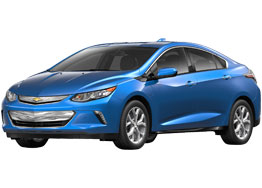CR: The Model 3 required 152 feet, which CR said was "far worse than any contemporary car we've tested" and about 7 feet longer than the stopping distance of a Ford F-150 full-sized pickup. The amount of distance a Tesla car needs to brake is the same distance a Big Rig Truck needs for the same speed.

Our Braking Test

Our Braking Test
As its name implies, CR’s
braking test is meant to determine how a vehicle performs in an
emergency situation. The test is based on an industry-standard procedure
designed by SAE International, a global engineering association. Our
testers get a car up to 60 mph, then slam on the brakes until the car
comes to a stop. They repeat this multiple times to ensure consistent
results. Between each test, the vehicle is driven approximately a mile
to cool the brakes and make sure they don’t overheat.
This layout forces drivers to take multiple steps to accomplish simple tasks. Our testers found that everything from adjusting the mirrors to changing the direction of the airflow from the air-conditioning vents required using the touch screen.
These types of complex interactions with a touch screen can cause driver distraction because each act forces drivers to take their eyes off the road and a hand off the steering wheel.
1) vehicle behavior can be modified "over the air" - that's a negative thing for me:
2) riding around on 400V of batteries....uh, that's a really big no no for me.
3) getting stranded out the middle of no where with no way back.
4) curtailed travel because there's no where to charge - a suggestion that since we don't offer charging in that area you really ought not go there. Is this the beginning of a deliberate restraint on freedom of movement?
5) a vehicle with "over the air" connection can be tracked as well and that's a privacy issue.
https://www.consumerreports.org/hybrids-evs/tesla-model-3-review-falls-short-of-consumer-reports-recommendation/
Other Concerns...and Highlights
Another major factor that compromised the Model 3’s road-test score was its controls. This car places almost all its controls and displays on a center touch screen, with no gauges on the dash, and few buttons inside the car.This layout forces drivers to take multiple steps to accomplish simple tasks. Our testers found that everything from adjusting the mirrors to changing the direction of the airflow from the air-conditioning vents required using the touch screen.
These types of complex interactions with a touch screen can cause driver distraction because each act forces drivers to take their eyes off the road and a hand off the steering wheel.
1) vehicle behavior can be modified "over the air" - that's a negative thing for me:
2) riding around on 400V of batteries....uh, that's a really big no no for me.
3) getting stranded out the middle of no where with no way back.
4) curtailed travel because there's no where to charge - a suggestion that since we don't offer charging in that area you really ought not go there. Is this the beginning of a deliberate restraint on freedom of movement?
5) a vehicle with "over the air" connection can be tracked as well and that's a privacy issue.
https://www.consumerreports.org/hybrids-evs/tesla-model-3-review-falls-short-of-consumer-reports-recommendation/